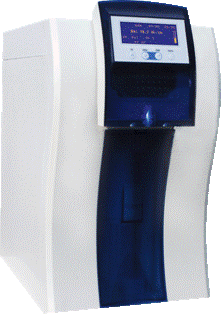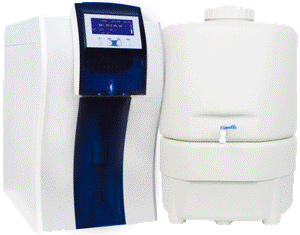How to Choose the Right Pure and Ultrapure Water System for Your Lab
Likang Marketing Department---Dong Yong
In recent years, many laboratories in universities, research institutions, and other organizations have started using pure water and ultrapure water systems instead of traditional distillation methods. In the eastern regions, especially at the municipal level and above, these systems are now widely adopted. Examples include environmental monitoring stations, food and drug inspection offices, disease control centers, quality inspection departments, and agricultural soil and fertilizer testing facilities. Many enterprises also use such systems, particularly in the eastern region as well as in central and western areas.
Compared to electric distillation or purchasing external water, ultrapure water systems offer greater convenience and cost-effectiveness. While most chemical analysts recognize this benefit, many technicians still lack a full understanding of how to choose the right system. Misunderstandings often occur during the purchasing process. To help you make an informed decision, here are some key considerations when selecting an ultrapure water system that suits your laboratory's needs.
1. Water Consumption
Most ultrapure water systems on the market produce between 5 to 20 liters per hour, with systems producing over 20 liters being considered non-standard. It is important to select a system based on your actual daily water usage. A general rule is to choose a system that can provide double your daily consumption. For example, if you need 10 liters per day, a system with a 20-liter/hour capacity would be appropriate. Choosing a system that’s too small may lead to frequent refills, while one that’s too large could result in unnecessary waste. If your system produces a lot of concentrated water, you may need a larger storage tank to ensure continuous supply.
2. Water Quality Requirements
National laboratory standards define three levels of water quality: first-grade, second-grade, and third-grade. Most labs typically require two types of water: tertiary water (used for cleaning glassware) and first-grade water (used for precision analysis like liquid chromatography or atomic absorption). When choosing an ultrapure water system, it’s crucial to match the system’s output to your specific needs. Systems that use tap water usually have two outlets: one for purified water (tertiary grade) and another for ultra-pure water (first-grade), which has a resistance of over 18 megohms. However, many customers are unclear about their exact water requirements. Although there are national standards, they often lack detailed specifications for specific experiments or instruments. Based on experience, the following guidelines can help you make a better choice.
2.1 Experimental Content
For inorganic experiments, water with a resistance of over 18 megohms is sufficient. However, for organic experiments, it’s essential to remove organic compounds, so the water must have both high resistance and low total organic carbon (TOC). If the experiment involves biological samples, the water must also be free of bacteria.
2.2 Instrument Type
The type of equipment used in your lab will determine the required water quality. For example, liquid chromatography requires water with a resistance over 18 megohms and minimal organic content. Atomic absorption and environmental monitoring instruments also require similar water quality. For life science applications like PCR, sterilization is necessary in addition to high resistance and low TOC.
2.3 Current Water Source
If your existing water source meets certain quality standards, you can inform the manufacturer, who can then recommend the most suitable model based on your situation.
These principles are based on real-world experience and can guide your purchase, but for the most accurate selection, providing detailed water quality parameters—such as conductivity, trace elements, bacterial count, and TOC—is highly recommended.
3. Raw Water Quality
Before purchasing an ultrapure water system, it’s essential to provide the manufacturer with details about your raw water quality. This includes factors like sediment content, hardness, and whether it’s groundwater or tap water. Depending on the raw water quality, the system may require additional components, such as a pretreatment unit for high sediment levels, a softening device for hard water, or a two-stage reverse osmosis system for high salt content. If the system uses purified water as its input, you only need to specify your desired water quality and consumption.
4. Modular Design Options
Likang–Heal Force offers six modular options for ultrapure water systems tailored to China’s unique water conditions, ensuring flexibility and customization. These modules include enhanced pre-treatment, reverse osmosis, multi-functional water tanks, ion exchange columns, UV lamps, and membrane filtration units. For instance, if your raw water has a conductivity higher than 400 μS/cm, an enhanced pretreatment module is recommended. For in vitro fertilization, microfiltration and ultrafiltration membranes along with dual-wavelength UV lamps may be necessary.


Dental Portable X-Ray,Handheld Dental X-Ray,Portable Dental Xray Unit,Portable Dental X-Ray Unit
Rolence Enterprise Inc. , https://www.rolencedent.com